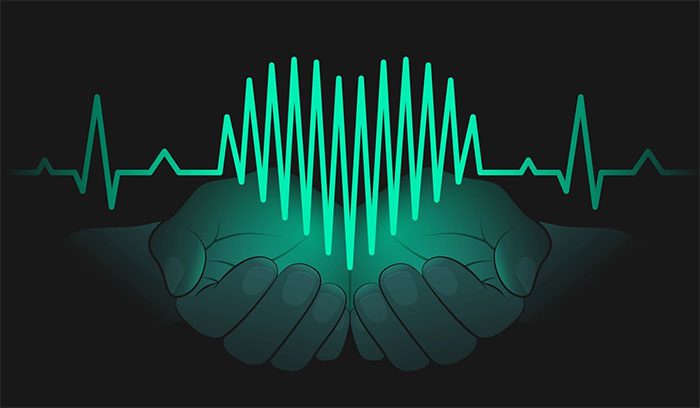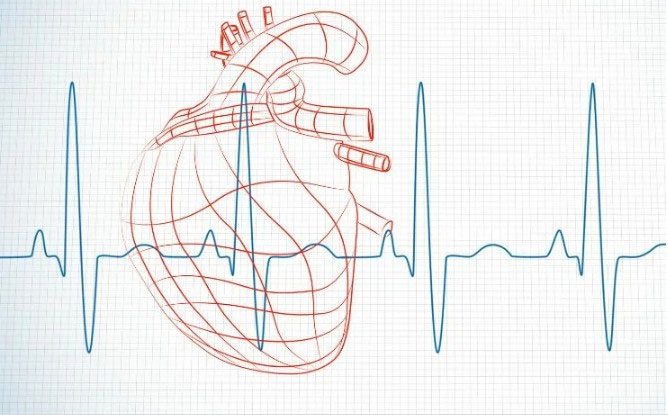Human life depends on the heartbeat.
Each time the heart beats, oxygen-rich red blood is delivered to various parts of the body, serving as an energy source for cellular functions.
Normal Heart Rate

Heart rate changes from fetal development to adulthood and stabilizes thereafter.
The human heart is the first organ to activate and the last to cease functioning. The heart begins to work as early as the 18th day after conception.
In adults, the average weight of the heart is about 250 – 350 grams. Men’s hearts are typically heavier than women’s. The length of the heart ranges from 10 to 15 cm.
The number of heartbeats per minute is referred to as heart rate. Heart rate varies from fetal development through adulthood, stabilizing at that point. The average heart rate at different life stages includes:
- Fetal heart rate: 120 – 160 beats per minute.
- Newborn heart rate: 130 – 150 beats per minute.
- Heart rate of toddlers (around 1 year old): 80 – 130 beats per minute.
- Heart rate of older children (around 7 years old): 70 – 110 beats per minute.
- Adult heart rate: 60 – 80 beats per minute.
Generally, as children grow, their heart rate decreases. Active children tend to have faster heart rates than those who are less active.
Typically, heart rate increases with activity and exercise. However, during rest, the heart rate returns to its normal frequency. This fluctuation in heart rate is physiological.
Nonetheless, some factors can affect heart rate even at rest:
- Weather: When air temperature or humidity increases, the heart will beat faster.
- Emotions: States of stress, anxiety, and even excessive happiness can raise heart rate.
- Weight: Individuals at risk of obesity or who are obese generally have a faster heart rate than those of normal weight.
- Medications: Some long-term medications may have side effects that increase or decrease heart rate. Treating physicians will provide guidance on this.
A slow heart rate does not always indicate a medical condition.

Slow heart rate. (Illustrative image).
Many individuals experience “beneficial” slow heart rates due to training, such as athletes, yoga practitioners, and those with genetic predispositions to a slower heart rate. All of them can lead normal, healthy lives.
Pathological slow heart rate occurs when it is accompanied by symptoms like fatigue, dizziness, and fainting. Causes of slow heart rate include: side effects from medications (which return to normal upon discontinuation), diseases causing electrolyte imbalances, “malfunctions” in the heart’s conduction system, and advanced age.
In practice, some cases of slow heart rate may not require treatment as long as they are monitored. Patients are advised to have regular specialist check-ups or seek care whenever symptoms arise.
Cases of excessively slow heart rate are considered dangerous conditions that, if untreated, could lead to serious complications with unpredictable consequences.
Fast Heart Rate
Individuals with a heart rate >80 beats per minute are only considered to have a medical condition if the measured rate exceeds 100 beats per minute while at rest.
Common causes of fast heart rate include: fever, anemia, smoking, alcohol dependence, excessive coffee consumption, drug addiction, thyroid disorders, irregularities in the heart’s rhythm control, and side effects from certain long-term medications.
Generally, “temporary” fast heart rate is linked to various psychological states such as anxiety, stress, or high exertion levels.
Anyone who notices a sudden increase in heart rate, feeling as if their heart is pounding like a drum, particularly if accompanied by dizziness, nausea, vomiting, fainting, or chest pain should seek medical attention as soon as possible.
Maximum Heart Rate Limit: Sports health experts define the maximum heart rate limit to determine the ideal heartbeat frequency during exercise, aiming to prevent excessive strain on the heart.
The formula to calculate the maximum heart rate (X) is as follows: X = 220 – age.
For example, for a 28-year-old athlete, X = (220 – 28) = 192 (beats per minute). This means that during training, the athlete’s heart can ideally beat up to 192 times per minute. If this limit is exceeded, it should be reassessed due to the potential overload on the heart.
Determining the maximum heart rate limit helps adjust training routines and intensity levels. However, this calculation is only a guideline, as it also depends on individual characteristics, health status, and any potential underlying conditions.


















































